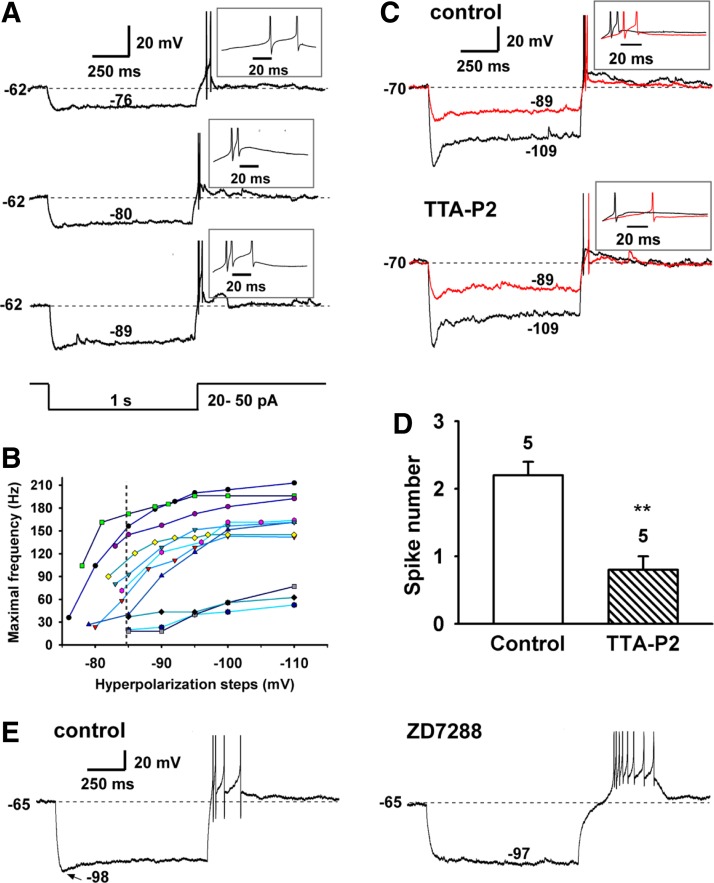Fig. 7.
Hyperpolarization-induced rebound burst firing in RP3V Kiss1 neurons. A: hyperpolarization-induced rebound burst firing from a Kiss1+/TH+ cell that expressed IT of 52 pA (activated at −60 mV) and had input resistances of 0.53 and 2.0 GΩ between −80 and −60 mV and between −70 and −50 mV, respectively. B: analysis of the effect of hyperpolarizing steps on maximal burst frequency in 11 cells. Dashed line, mean hyperpolarization threshold for burst firing of 82% of neurons. C: example recording showing that T-channel blocker TTA-P2 (5 μM) blocked the rebound burst firing. This cell had IT of 67 pA and Ih of 46 pA. Current injections of −30 and −90 pA yielded hyperpolarizations of −89 and −109 mV, respectively. D: summary of effects of TTA-P2 on spike number of rebound burst firing. **P < 0.01, paired Student's t-test. E: example recording showing that h-channel blocker ZD-7288 (50 μM) did not block the rebound burst firing but increased the delay to the first spike. This cell had IT of 30 pA and Ih of 38 pA. Current injection of −60 pA hyperpolarized the cell membrane to −98 mV.

